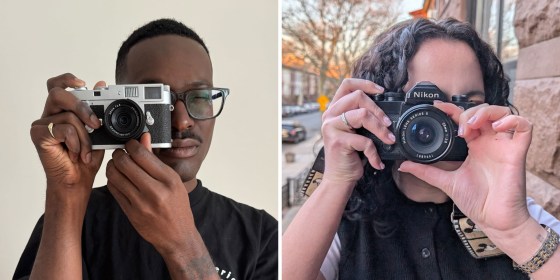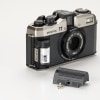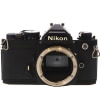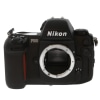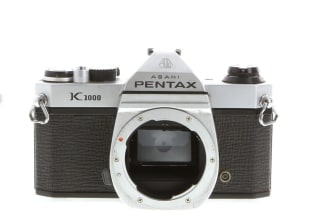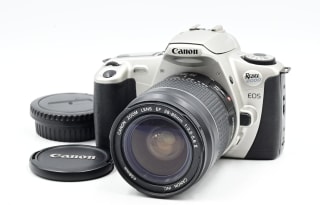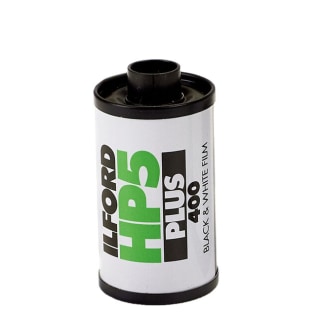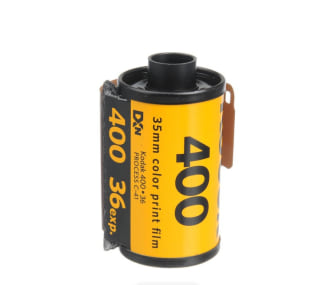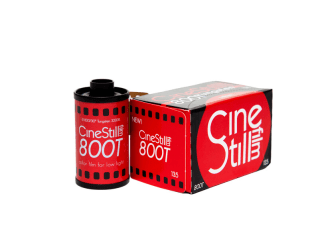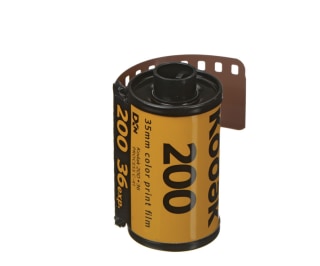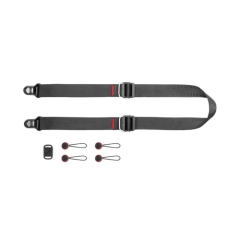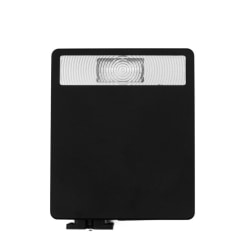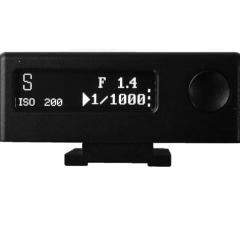There is something inherently tactile and emotional about film. There’s a reason award-winning films like Anora and TV shows like Severance still get shot on film despite how expensive and limiting it can be. It might be the same reason I, and many of my coworkers, love our film cameras.
It’s more than just a “look” — shooting film in a world where digital cameras and smartphones exist is all about passion, feeling and attention to detail, says Quintavius Oliver, an award-winning photographer and virtual buyer for Keh Camera.
But knowing where to start, especially if you’ve only ever taken photos on your phone, can be intimidating. I spoke with photographers and industry experts about how to get started with film photography, and tested a dozen film cameras over the last two years.
SKIP AHEAD The best new film cameras | The best used film cameras | The best 35mm films | Film camera accessories we love | How to start shooting film | Why trust NBC Select?
How we picked the best film cameras
There is no such thing as a “best” film camera: it really depends on what you like to shoot and how you want your photos to look and feel. Still, there is a reason some models are more popular than others — they strike a great balance between price, features, reliability and more.
We combined our experience shopping for film cameras with advice from camera retail experts to pick our favorite models based on the following criteria:
- Feel: The most important thing is how a camera feels in your hands. “All that matters is that what you’re holding inspires you to go out and create,” says Oliver. I tried a dozen film cameras before landing on my favorites for this exact reason.
- Price: Film cameras can cost anywhere between $60 and $6000. You don’t need to spend thousands to make a good photo, says Oliver. That’s why nearly all of our recommendations cost less than $500.
- Controls: Older film cameras force you to slow down and make a picture, not take one. Newer film cameras may have more automated features like autofocus, auto exposure and more. What you prefer is up to you — that’s why we included cameras ranging from dead simple to high-tech.
- Light metering: A light meter is typically built-in to your film camera, and lets your camera tell you whether the scene you’re pointing at will create an exposure that’s too bright (overexposed), too dark (underexposed) or just right. This is an essential tool for knowing when to adjust your camera’s settings to let in more or less light for a scene. Nearly all of our picks have a light meter built-in.
If you find terms like exposure, aperture and shutter speed confusing, you can learn more about them and other photography terms at sites like MasterClass, Adobe and Youtube.
Want more from NBC Select? Sign up for our newsletter, The Selection, and shop smarter.
The best new film cameras in 2025
There are fewer choices of new film cameras than there are old ones. Most new film cameras on the market today are disposable or reusable point-and-shoots. While those cameras can be fun (and we include one below) they are akin to dipping your toe into an olympic-sized swimming pool. Thankfully, a handful of more robust new film cameras have been released in the past few years, giving shoppers more options.
Best overall: Pentax 17
- Good for beginners and experts
- Compact and comfortable
- Takes 72 shots per film roll
- Slightly plasticy
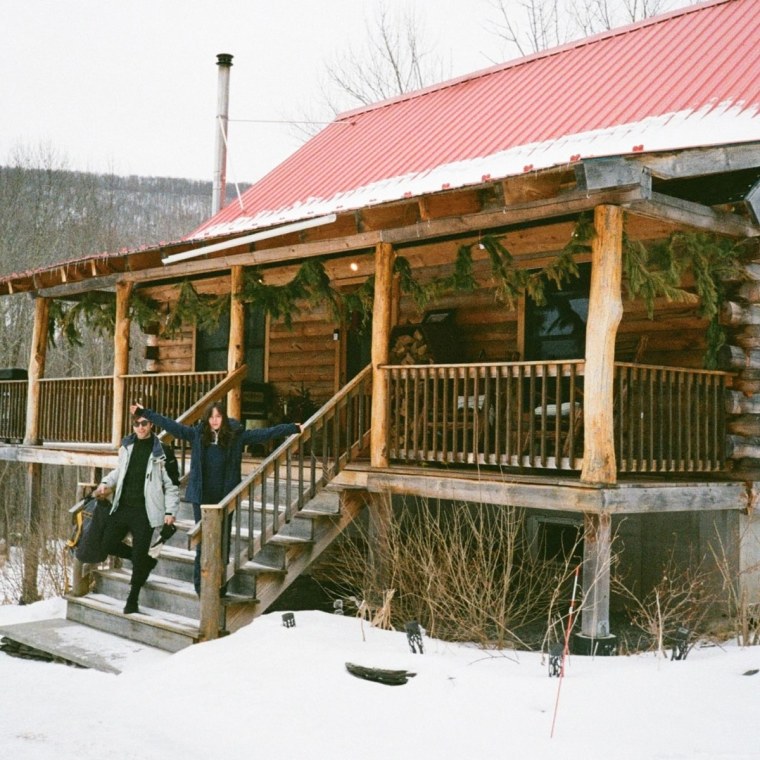
NBC Select editorial projects manager Rebecca Rodriguez and I love the Pentax 17. We used it for about two months after the brand loaned us one to try out. It deftly mixes new and vintage features to create a shooting experience that is both beginner-friendly and creatively fulfilling.
Beginners can put the camera in Auto mode, point and shoot: the lens is sharp and detailed, and will capture great scenes. But the Pentax 17 also has a surprising amount of manual control for a point-and-shoot camera: exposure compensation, multiple shooting modes, zone focusing and indicator lights for things like flash and underexposure, to name a few. Shooting outside of Auto mode takes a little getting used to, but I got the hang of it after only a few shots.
The camera is a half-frame camera, which means a few things. Like a smartphone, holding it normally shoots vertical photos while rotating it sideways changes to a horizontal view. The camera can take 72 photos per roll of film — regular 35mm film cameras get 36 shots. The half-frame means each photo has slightly less detail and resolution, but if you are mainly looking at photos on your phone or sharing them via social media, it’s hard to notice the difference.
Weight: 0.63 lbs. (290g) | Focus: manual (zone) | Modes: auto, program, flash, bulb | Built-in flash: yes | Shutter speed: 4-1/350 sec. | ISO: 50-3,200 | Battery: one 3V CR2
Best budget: Kodak H35N
- Competitive price
- Colorful and pocketable
- Built-in flash and star filter
- Indoor photos are often dark
- Limited control
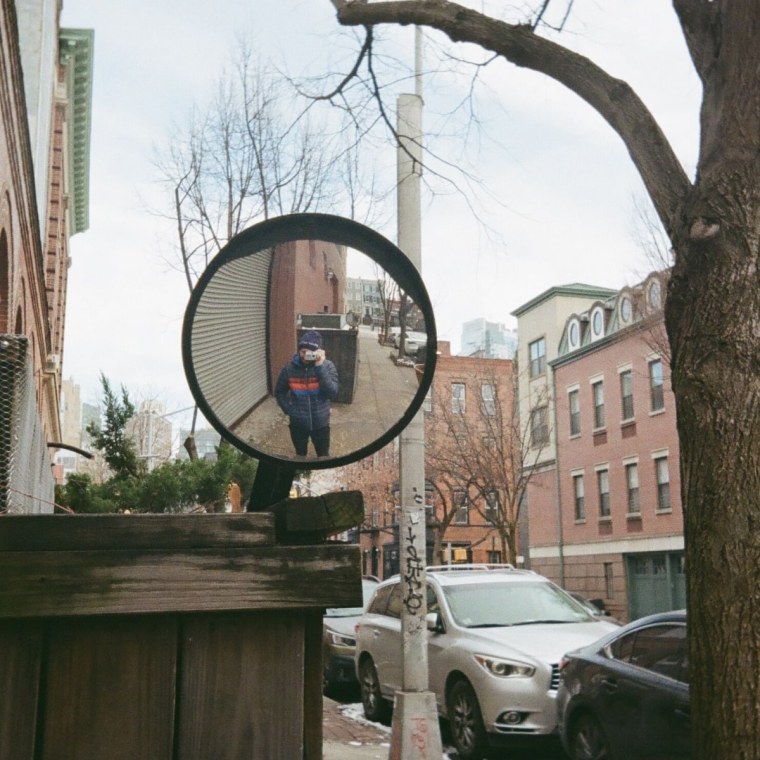
Anyone who finds photography, let alone film photography, intimidating can rest easy using the Kodak H35N. It’s a step up from a disposable camera but doesn’t cost a fortune, and doesn’t require you to do much except point and shoot.
It has a built-in flash that also comes with a start filter, which basically makes certain reflections and points of light look like big, dramatic flares.
Something to note is that the lens isn’t very bright and the flash isn’t very strong — I took plenty of shots that ended up dark and underexposed. One way to prevent this issue is by using film with an ISO of 400 or above (more on film here).
Weight: 0.24 lbs. (110g) | Focus: fixed | Modes: n/a, bulb | Built-in flash: yes | Shutter speed: 1/100 sec., | ISO: n/a | Battery: one AAA
The best used film cameras in 2025
There are hundreds of incredible used film cameras on the market today. Team NBC Select almost exclusively shops used — we regularly use film cameras from the 1950s, 1970s and 1990s without issue.
Buying used can be a little more complicated than shopping new. If you are a first-time buyer, I recommend shopping at an established retailer like Keh and Used Photo Pro — both have transparent buying, selling, return and warranty policies. Just make sure to buy a camera in good condition, and not one listed as “for parts”, “for repair” or “inoperable”.
I’ve also had great experiences on marketplaces like Ebay, though I recommend you read our eBay buying guide for tips on how to find the best products from reputable sellers.
Prices listed below are averages I’ve seen listed for each camera over the past few months.
Staff pick: Nikon FM
- Reliable, mechanical design
- Lots of lens options
- Timeless and stylish
- A bit of a learning curve
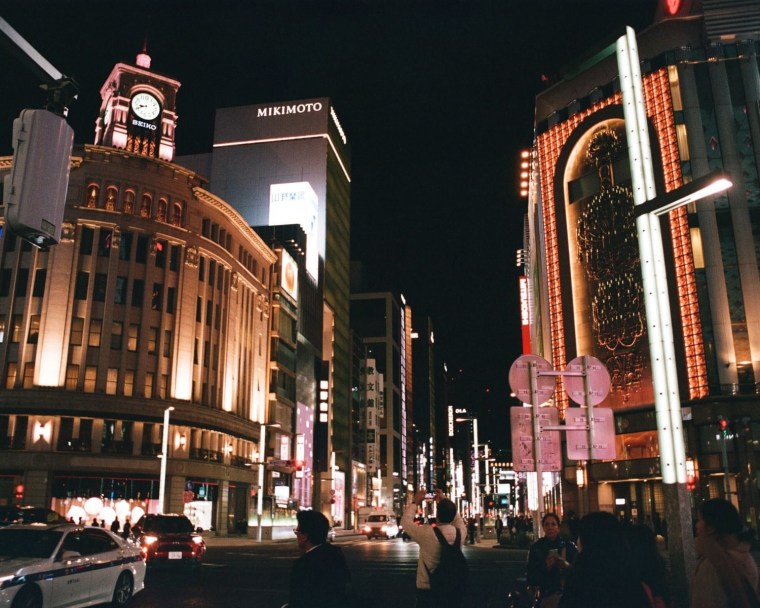
Rodriguez has used this camera for about seven years. It originally belonged to her father, who bought it in the late 1970s. Rodriguez brought it to a camera shop for a deep clean, and it has worked flawlessly ever since. She almost always uses it with a small, wide-angle Nikon lens attached.
Like many cameras of the 1970s, the Nikon FM is a very manual camera: there are no automatic modes of any kind, just a simple light meter that tells you if your settings are too bright, too dark or just right.
But that manual, mechanical design is why Rodriguez loves this camera, and why it still works well nearly 50 years after it was originally released. “I love being able to set up every aspect of my shot from shutter speed to aperture to focus without the camera doing it for me,” says Rodriguez.
Released in: 1977 | Weight: 1.3 lbs. (590g) | Focus: manual | Modes: manual, bulb | Built-in flash: no | Shutter speed: 1-1/1000 sec. | ISO: 12-3200 | Battery: two LR44/A76
My pick: Nikon F100
- Modern, comfortable design
- Incredibly versatile
- Many automatic modes
- Can be pricey
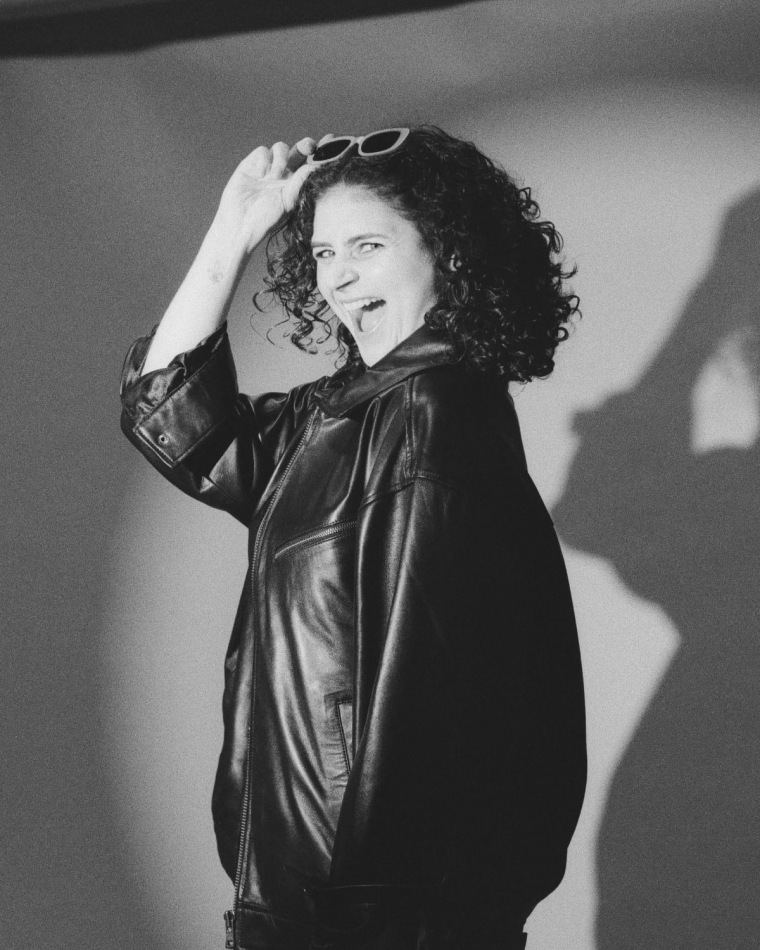
I’ve tested a dozen film cameras — the Nikon F100 is by far the most capable. It lets me control focus, aperture and shutter speed much more precisely than other film cameras I’ve tested, meaning I almost never take a photo that is unintentionally blurry, too dark or too bright. Plus it has auto and manual focus, and in manual focus mode, it has a focus confirmation indicator light.
The F100 is also surprisingly easy to use. Its modern shape and design makes it incredibly comfortable to hold, even one-handed, for a whole day of shooting. Plus its auto-focus and auto-exposure modes make it easy to pass to a friend for them to take a good photo too. I pair mine with this small and lightweight Nikon autofocus lens that is available new or used.
Released in: 1999 | Weight: 1.73 lbs. (785g) | Focus: auto, manual | Modes: auto, aperture-priority, shutter-priority, manual, bulb | Built-in flash: no | Shutter speed: 30-1/8000 sec. | ISO: 6-6400 | Battery: four AAs
Expert pick: Pentax K1000
- Widely available
- Easy to repair and service
- A bit of a learning curve

The Pentax K1000 is the film camera for learning photography. It was, and often still is, the camera loaned to students taking an introductory film photography course. It was the same camera that Rodriguez used to learn photography. It also comes recommended by Mark Steinberg, the senior technologist at B&H Photo & Video.
Like the Nikon FM, the Pentax K1000 is a manual camera. The camera’s light meter will indicate if your settings are too bright or too dark and that’s about it — everything else is up to you. You have to manually focus, twist shutter speed and aperture dials and wind the film forward after every shot.
The Pentax K1000 was produced for over twenty years from 1976 through 1997. It is a simple camera that is widely available and easy to service and repair, says Oliver.
Released in: 1976 | Weight: 1.36 lbs. (620g) | Focus: manual | Modes: manual, bulb | Built-in flash: no | Shutter speed: 1-1/1000 sec. | ISO: 20-3200 | Battery: one SR44
Budget pick: Canon EOS Rebel 2000
- Low price point
- Advanced automatic modes
- Very lightweight
- Questionable durability
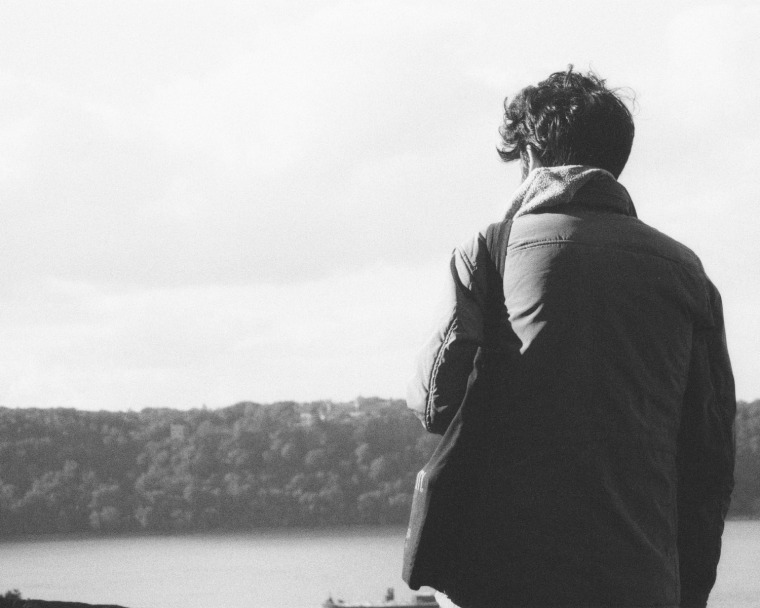
This was the camera I took my first film photos with, and remains a lesser-known but very capable budget option. It has multiple auto-focus and auto-exposure modes, making it easy for a beginner to try out without learning much about photography. A dial on the top switches between automatic modes, and even has little icons like a head, a mountain and a flower to indicate portrait, landscape and close-up photo modes.
Paired with an affordable Canon autofocus zoom lens, this is a camera almost anyone can pick up and take photos with.
Released in: 1999 | Weight: 0.73 lbs. (335g) | Focus: auto, manual | Modes: auto, aperture-priority, shutter-priority, manual, bulb | Built-in flash: yes | Shutter speed: 3-1/2000 sec. | ISO: 25-6400 | Battery: two 3V CR2s
Editors’ pick: Leica M2
- Very reliable
- Exceptional lenses
- Quiet to use
- Very expensive
- Steep learning curve
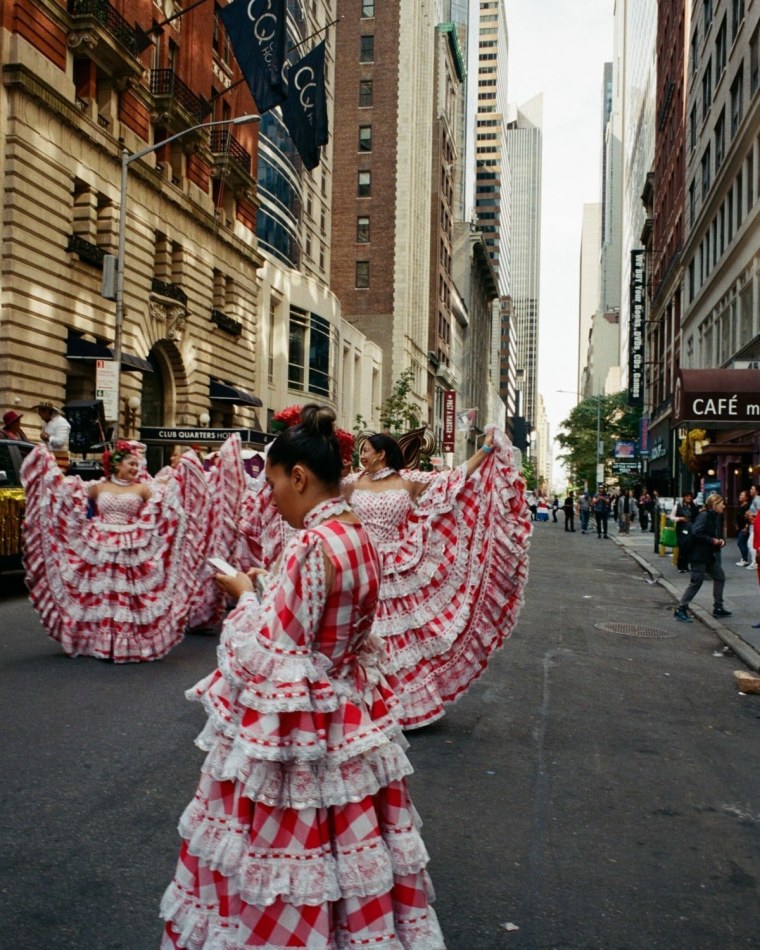
Leica is a bit of an it brand — it makes highly-regarded (and very popular) cameras that usually cost upwards of $6000. NBC Select commerce editor Jordan Bowman bought this much older model used from Keh, and has been shooting with it for about six months. It is exceedingly smooth, reliable and quiet to use.
But the main draw is the lenses — Leica cameras are compatible with some of the sharpest, most detailed vintage camera lenses. Bowman uses a wide-angle Voigtlander lens that renders scenes with precise detail and vivid color.
Unlike every other camera on our list, this camera does not have a built-in light meter. To compensate for this, Bowman slots a Keks light meter on top of the camera to get information about his exposure.
Released in: 1957 | Weight: 1.23 lbs. (560g) | Focus: manual | Modes: manual, bulb | Built-in flash: no | Shutter speed: 1-1/1000 sec. | ISO: n/a | Battery: none
The best 35mm films
Your film is arguably more important than your camera — it largely decides the tone, texture, color and feel of all your pictures.
There are dozens of films to choose from, but the most important thing to understand before shopping is ISO. ISO is a number that indicates how sensitive the film is to light: the higher the number, the more sensitive. This means that a high ISO film (Kodak Portra 800) will handle low-light situations much more easily than a low ISO film (Kodak T-Max 100). Low ISO films can have less grain and finer detail than high ISO film, but may require long exposure times that necessitate a tripod.
In our experience, a flexible, all-purpose ISO beginners should start with is ISO 400. Most of our recommended films below are ISO 400 or higher.
Oliver recommends spending weeks or even months shooting with one film before bouncing around to different options — you’ll learn a solid foundation about how film behaves in various environments.
Best black & white film for beginners: Ilford HP5 Plus 400
- Great for beginners
- Competitive price
- Timeless look
- Nothing at this time
When Oliver taught photography, he had all his students start with a 400 ISO black and white film, whichever was available. “The reason I suggest 400 ISO B&W is because of its tolerance for mistakes,” says Oliver. “You can underexpose or overexpose and the films are so forgiving that you’ll still end up with usable results.”
Ilford HP5 Plus is a 400 ISO black and white film-favorite among the NBC Select team. It has a timeless look with subtle contrast and noticeable grain. It is widely available in most camera stores, and is one of the more affordable options on the market.
Best color film for beginners: Kodak Ultramax 400
- Competitive price
- Great for beginners
- Punchy, vibrant colors
- Colors too saturated for some
This film delivers vibrant, punchy colors in almost any environment. It is also one of the only ISO 400 color films that costs less than $10 — alternatives like Kodak Portra 400 and Cinestill 400D cost a whooping $15 by comparison. I use Ultramax 400 when I am going to be in a colorful environment like a botanical garden in spring or a rustic hike in fall.
Best for portraits: Kodak Portra 400
- Subtle, warm colors and tones
- Excellent for portraits
- Fine grain
- Pricey
This is one of the most popular color films, often only available in packs of five, not individual rolls. It renders images with realistic detail, fine grain and soft colors that are well-suited to people and portraits. It is pricey, so we treat it less as an everyday film and more as an “event” film — reserved for when we’re going on an international trip or visiting family for the holidays.
Best for night photography: Cinestill 800T
- Striking halation
- Cool-tone color balance
- High ISO
- Pricey
All of our recommendations so far have been films made for shooting during daylight hours. Cinestill 800T, by contrast, thrives at night, under artificial light. Images with artificial light against the night sky tend to create strong halation — a blooming reddish or orangish halo that expands well-beyond the bounds of the light itself. Strong halation and cool color balance make photos on Cinestill 800T look very distinct
Staff favorite: Kodak Gold 200
- Warm, summery color tones
- Fine, subtle grain
- Best in a sunny environment
During the summer months, you’ll see Bowman and I loading our film cameras with Kodak Gold 200. To us, it is the epitome of a summer film — it renders scenes with warm, brown-gold tones that evoke the feeling of a vacation or California road trip.
Compared to our other recommendations, it has a lower ISO of 200, meaning it’s best suited to sunnier, outdoor photography.
Film camera accessories we love
Accessories like a camera strap or flash aren’t typically included when buying a used camera. I’ve listed some of our favorite camera accessories above.
How to start shooting film
Even with all the right camera gear, it can still be intimidating to start shooting film. You have a limited amount of shots per roll, and you have to think a lot more about your shot in the moment compared to using something like your smartphone.
Be patient
Be patient with yourself and the moment. Film cameras force you to slow down and be a little more deliberate and introspective before you click the shutter button. With a smartphone, you’re taking a picture, but with a film camera, you’re making it, says Steinberg.
Don’t overthink it
Your first roll of film (or even first five) may not come out the way you expect. This is usually not because of your gear, but your photography experience. “Just remember that mistakes happen and that’s how we learn,” says Oliver. “Be patient with yourself and trust your gear.”
Have fun
One reason I love shooting film is that it forces me to notice: notice the way the light is landing on someone’s face at a restaurant, the way one building looks out of place from the rest, the way strangers walk fast or slow or hunched or tall. Holding my film camera makes me notice any and everything around me, and being that in-the-moment makes me feel more present.
“At the end of the day, a camera is just a box that lets light in,” says Oliver. “What matters is if you were present and whether or not you actually made the picture.”
Meet our experts
At NBC Select, we work with experts who have specialized knowledge and authority based on relevant training and/or experience. We also take steps to ensure all expert advice and recommendations are made independently and without undisclosed financial conflicts of interest.
- Quintavius Oliver is an award-winning photographer whose work is showcased in various galleries and museums. He brings his deep artistic vision and technical expertise to his role as a Virtual Buyer for KEH Camera. (Keh Camera sells hundreds of cameras — Oliver does not have affiliations with any individual camera brand).
- Mark Steinberg is the senior technologist at B&H Photo & Video. He has decades of experience in camera and electronic sales. (B&H Photo sells hundreds of cameras — Steinberg does not have affiliations with any individual camera brand).
Why trust NBC Select?
I am a reporter at NBC Select who covers technology and fitness including recent stories on smartwatches, running shoes, point-and-shoot cameras and more. I’ve tried different popular film cameras for years. For this piece, I spoke with photography and retail experts to better understand film cameras and the current market. I also spoke with NBC Select staffers about their experience using film cameras.
Catch up on NBC Select’s in-depth coverage of tech and tools, wellness and more, and follow us on Facebook, Instagram, Twitter and TikTok to stay up to date.
